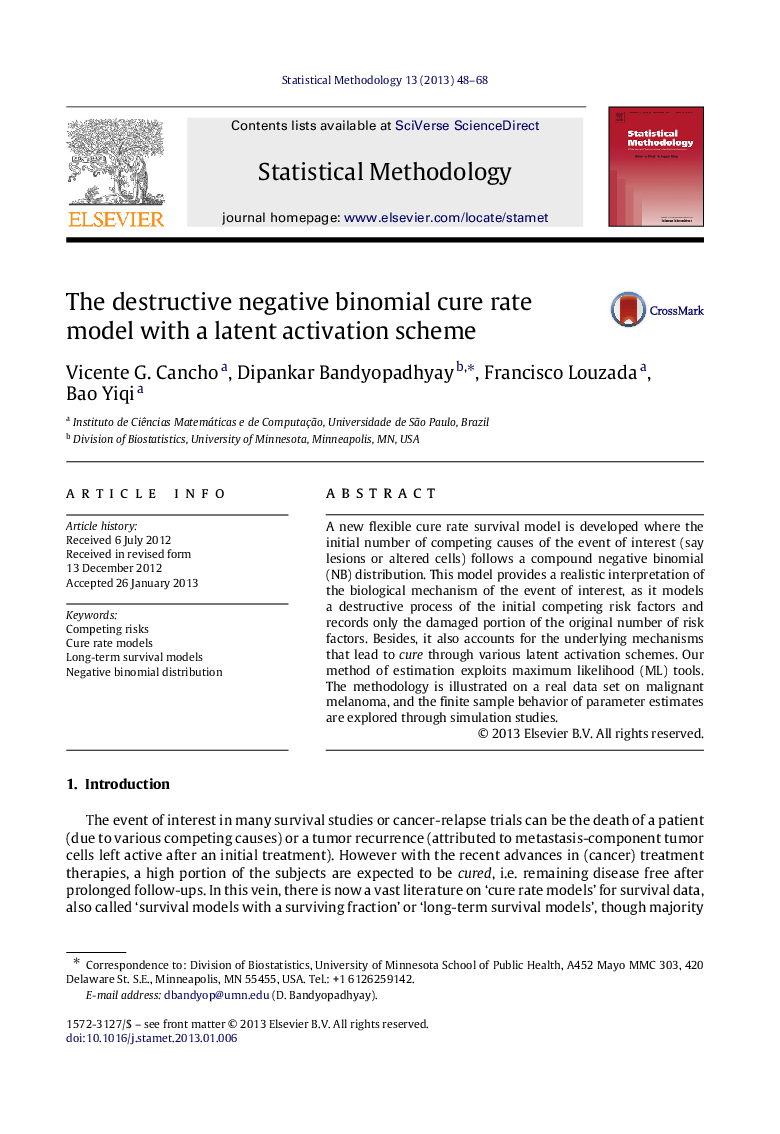| Article ID | Journal | Published Year | Pages | File Type |
|---|---|---|---|---|
| 1151080 | Statistical Methodology | 2013 | 21 Pages |
A new flexible cure rate survival model is developed where the initial number of competing causes of the event of interest (say lesions or altered cells) follows a compound negative binomial (NB) distribution. This model provides a realistic interpretation of the biological mechanism of the event of interest, as it models a destructive process of the initial competing risk factors and records only the damaged portion of the original number of risk factors. Besides, it also accounts for the underlying mechanisms that lead to cure through various latent activation schemes. Our method of estimation exploits maximum likelihood (ML) tools. The methodology is illustrated on a real data set on malignant melanoma, and the finite sample behavior of parameter estimates are explored through simulation studies.
